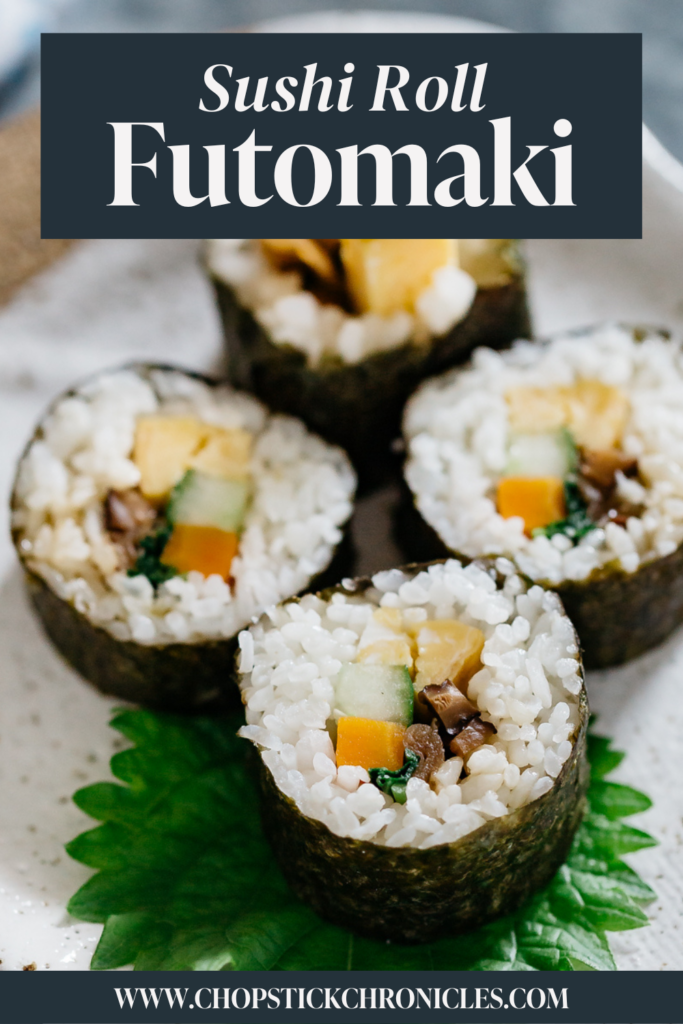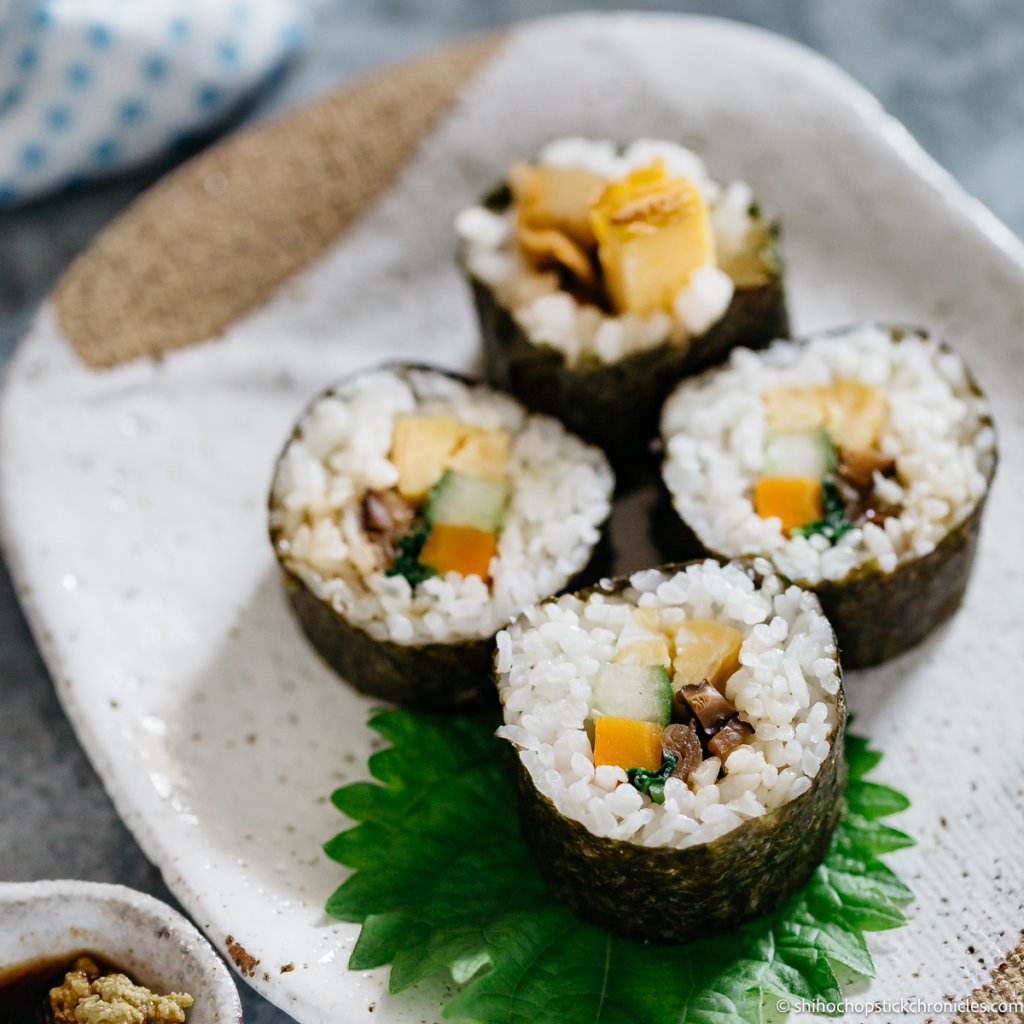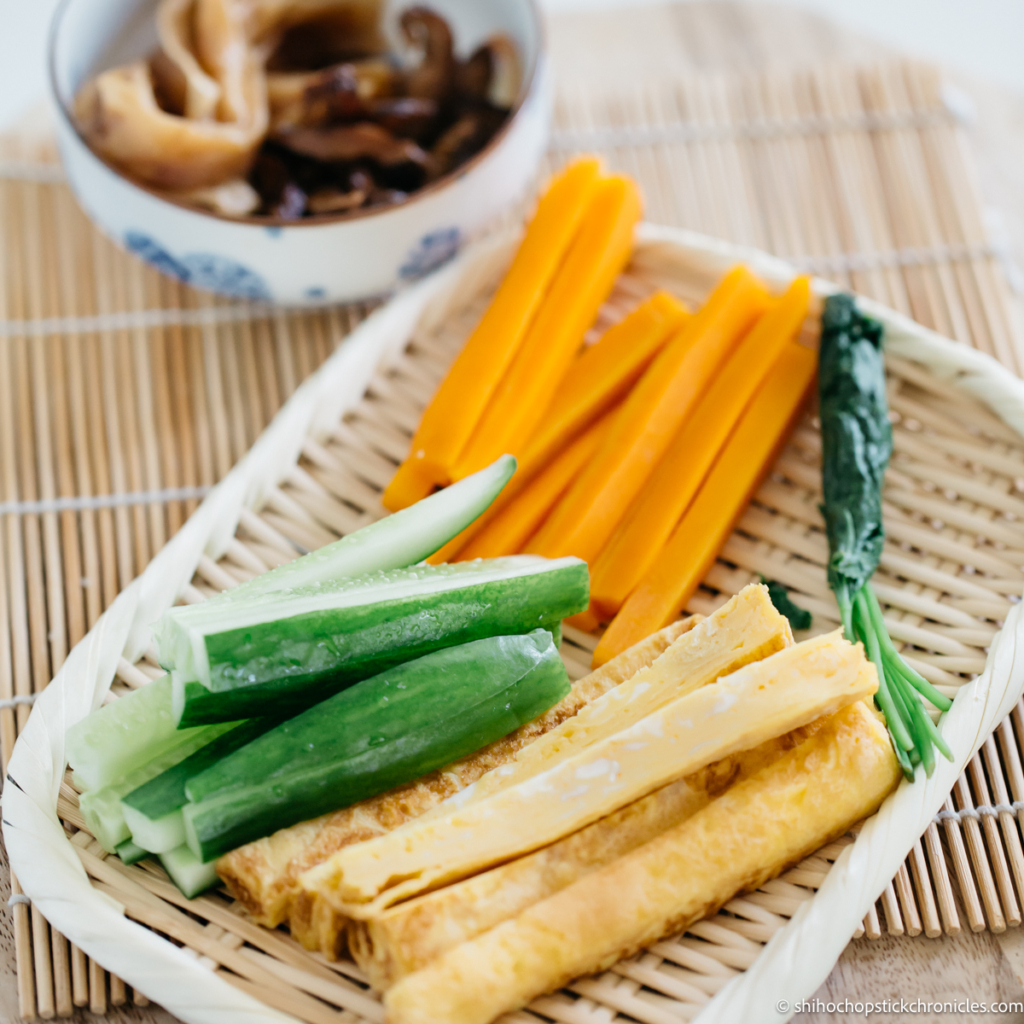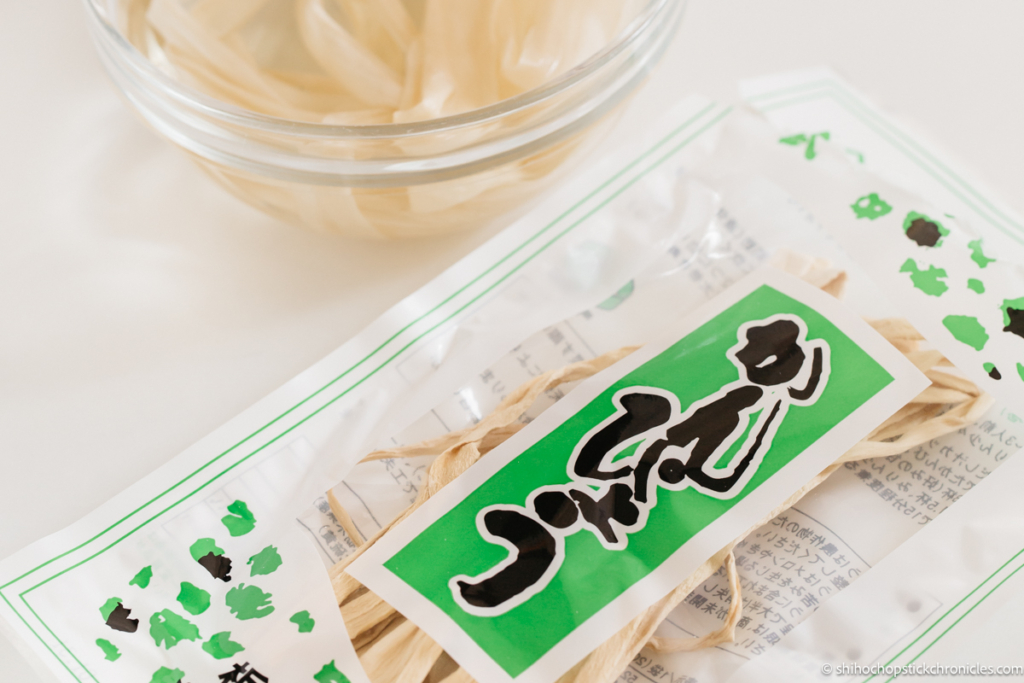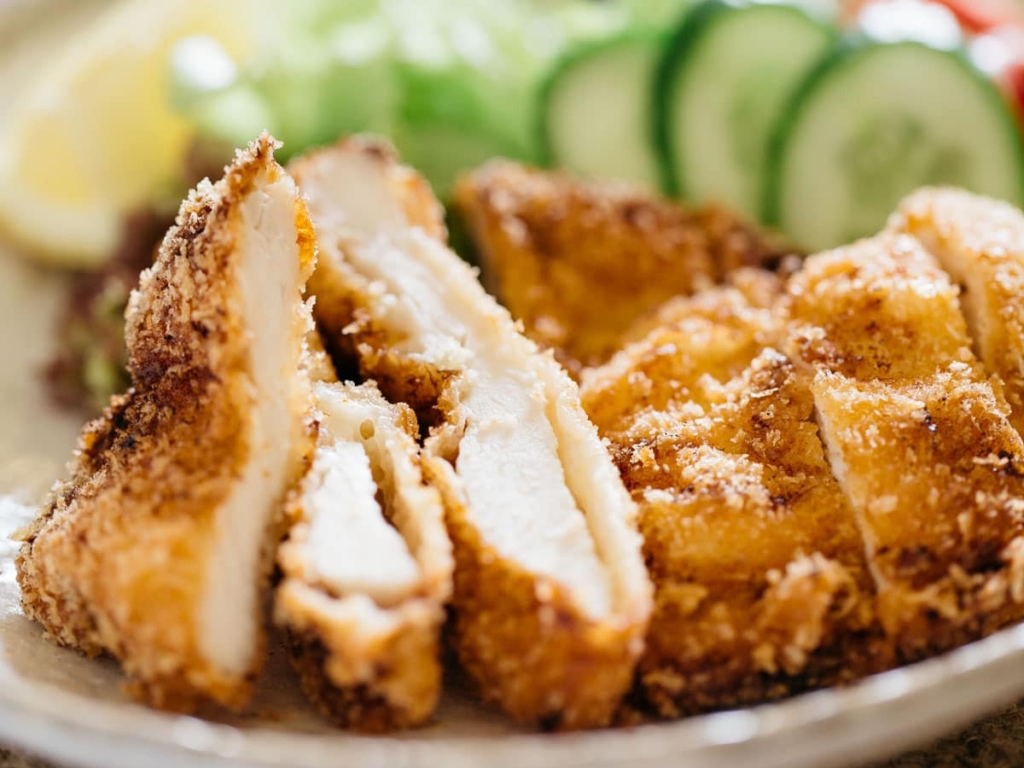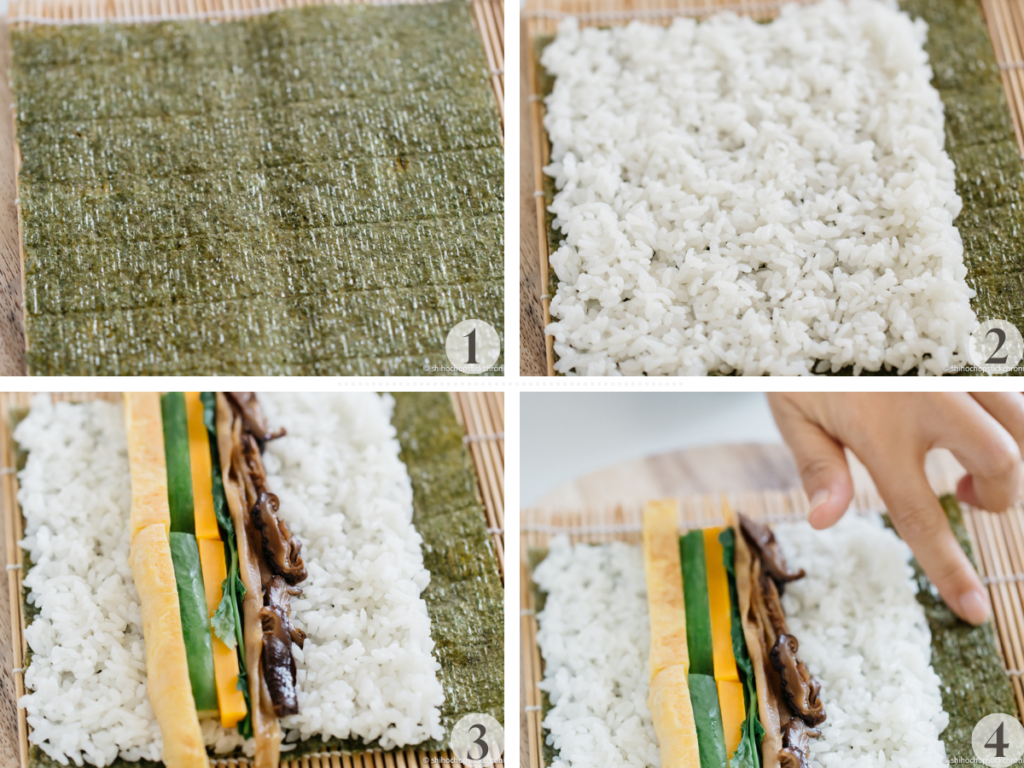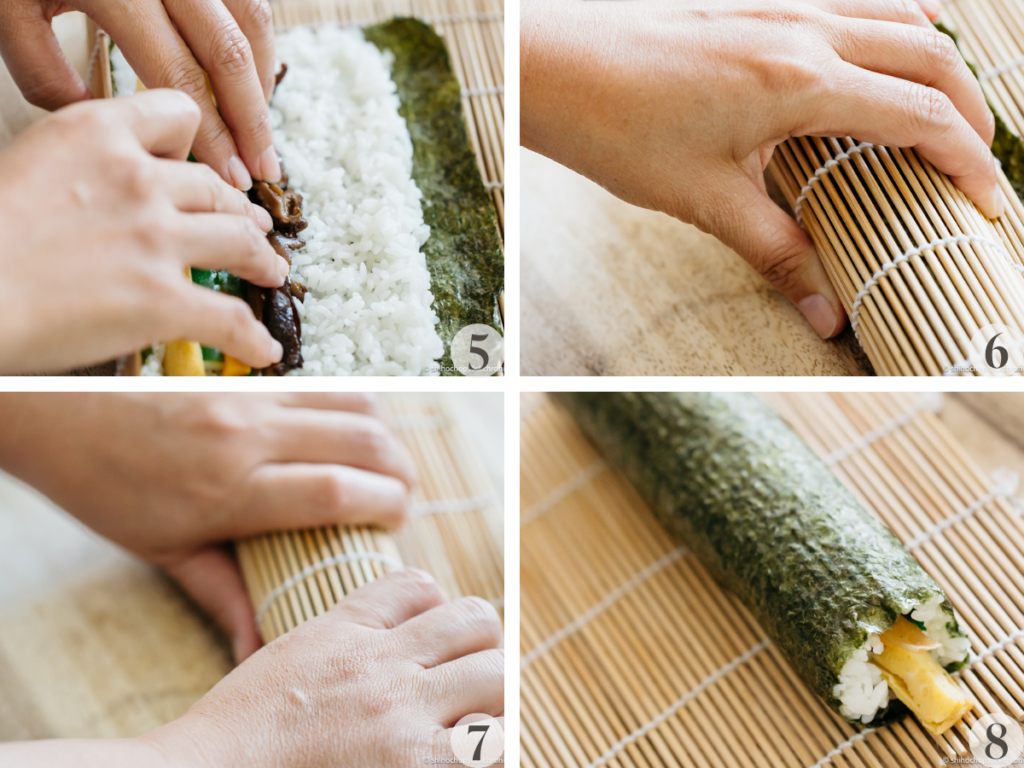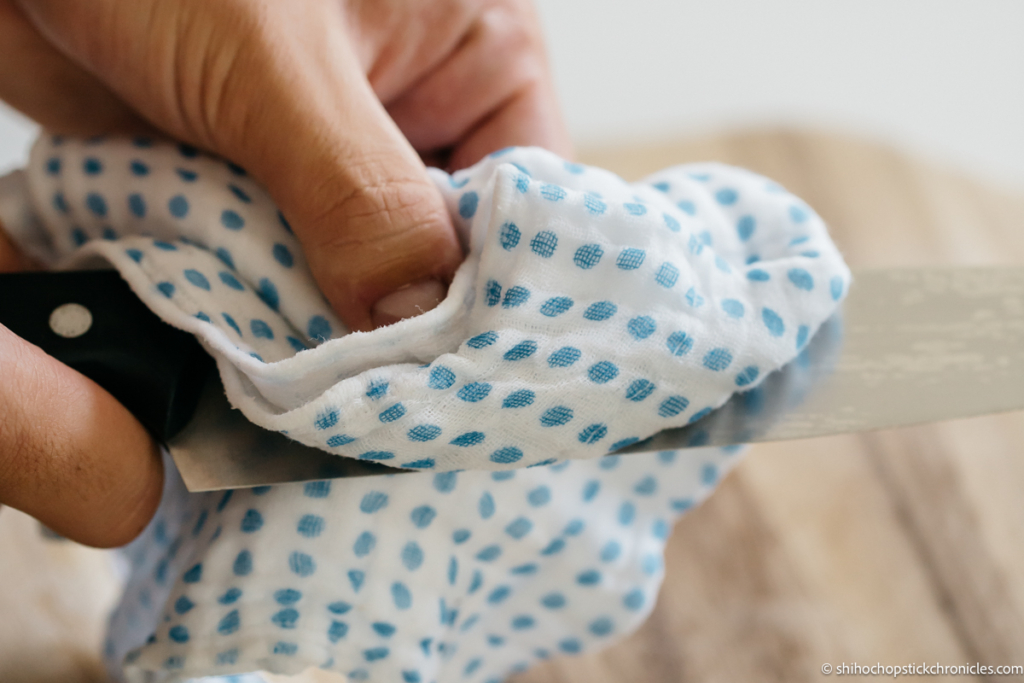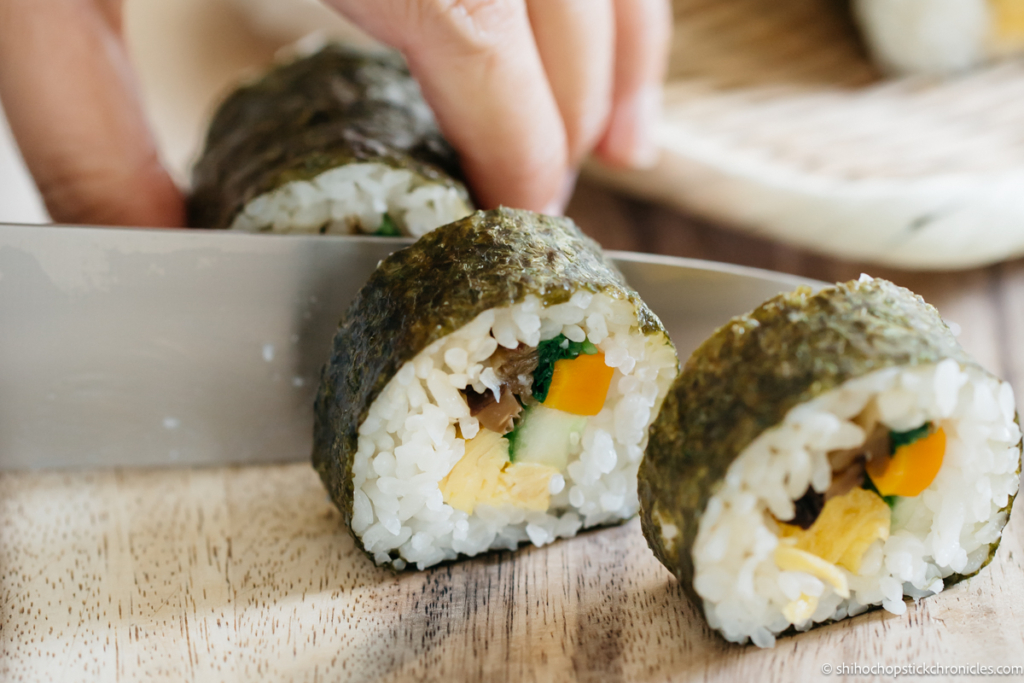Create your own traditional Japanese futomaki sushi rolls packed full of colorful and delicious ingredients.
Learn how to make futomaki sushi rolls like a pro! Often referred to as “thick rolls,” Futomaki is a popular type of sushi that features a variety of colorful ingredients wrapped in nori seaweed and sushi rice. There’s no need to be a professional sushi chef to create delicious homemade sushi at home. Simply gather your ingredients and follow along with our easy instructions and step-by-step photo guide to create your own beautiful and delicious Futomaki. They’re also easily customisable; perfect for picnics and lunches; and a fun activity for a dinner party with family and friends!
What is Futomaki
Futomaki Ingredients
Nori
Nori is a type of edible seaweed sheet used as the outer wrapping for futomaki and other types of sushi rolls. You can get nori sheets from supermarkets, Asian groceries, or online shops.
Sushi Rice
the base of all sushi is seasoned sushi rice. The cooked rice is mixed with vinegar, sugar, and salt.
Sushi Rolls Fillings
Basically you can put any fillings you like in these sushi rolls to suit your tastes. Futomaki typically consists of a variety of colorful and flavorful ingredients. I see many creative and unique fillings here in Australia that Japanese would not think of. For example, chicken katsu, and yakiniku. Traditionally, fillings are a combination of vegetables and tamagoyaki (egg omelette) or sea foods.
Vegetables :
Some common vegetable fillings that you can consider for your futomaki rolls are
- carrots (thinly sliced or julienned and cooked in seasoning, see instructions)
- spinach (sautéed or blanched)
- shiitake mushrooms (cooked in seasoning, see instructions)
- cucumber (thinly sliced).
- avocado
Some more special options include
- Kanpyo (dried gourd strips): Kanpyo is made from dried shavings of calabash. Calabash is a type of gourd. Kanpyo is the typical filling of futo makizushi (thick rolls) sushi rolls. It is usually cooked and flavoured in soy sauce, sugar and mirin. These strips have a slightly chewy texture and mild sweetness. It can also be used as edible strings to tie up Kombu kelp and stuffed fried tofu. They are available from Japanese grocery stores or online.
- Takuan (pickled daikon radish): Takuan is pickled daikon radish, which has been fermented in saltwater brine to develop its distinctive sourness and crunchy texture. Its bright yellow color adds visual appeal to the roll.
Proteins :
Meats/Fish
- Sushi-grade Tuna or Salmon (Sashimi): Some variations of futomaki such as Ehōmaki which is eaten at Setsubun in February contain slices of fresh raw tuna, salmon and unagi eel.
- Bbq unagi (eel): Eel in Japan is typically grilled that’s marinated with a special unagi sauce made from soy, mirin (a sweet rice wine), sugar, and sake. The eel is grilled until it achieves a caramelized glaze on the surface. This cooking process enhances its natural flavors while providing an irresistible smoky aroma.
- Yakiniku: this is thinly sliced and marinated bbq beef. It goes wonderfully with the rice and other ingredients.
- Chicken katsu: although it’s not traditional or common in Japan, chicken katsu is a fantastic option for those who don’t like raw/cooked fish or are new to sushi and want a familiar taste.
Vegetarian/Vegan Options
- Tamagoyaki (Japanese rolled omelet): A sweetened egg omelet known as tamagoyaki is often included in futomaki.
- Fried bean curd : For those who prefer a plant based option, fried bean curd (known as Aburaage in Japanese) is an excellent choice. This deep-fried tofu provides a unique texture and semi-sweet taste.
- Grilled/fried tofu: another great non-meat option is grilled or fried tofu. It adds protein and can add a nice crispy element.
You can mix and match these fillings based on your preferences and availability. Don’t forget to dip your futomaki rolls in soy sauce or enjoy them with wasabi and pickled ginger for a complete sushi experience!
How to Roll Futomaki
1. Make Sushi Rice
Wash sushi rice in cold water until the water runs clear. Cook the rice with kombu strip using a rice cooker. Once cooked, allow it to cool slightly before seasoning with sushi vinegar or a mixture of rice vinegar, sugar, and salt.
2. Assemble Your Fillings
Choose your preferred fillings for futomaki rolls (see above for fillings options) and cut the chosen fillings into strips.
3. Roll the Futomaki
Place your bamboo sushi mat on a clean surface.
Take one sheet of nori and place it shiny side down on top of your prepared sushi mat.
Spread the rice evenly using wet hands to prevent sticking, evenly spread about one cup of seasoned sushi rice onto the nori sheet, leaving a small border at the top edge. Avoid pressing too hard so that the rice isn’t squished so much.
Arrange your fillings. Place a selection of your chosen ingredients in a line across the middle of the rice. Be creative and combine different flavours and textures for an exciting futomaki roll!
Roll It Up. With both hands, hold the sushi mat and start rolling it away from yourself. Put a little bit of water or rice vinegar on the small border at the top and press to seal.
Tips to Make a Perfectly Rolled Futomaki
Perfectly rolled sushi has the fillings rolled right in the centre. The seaweed sheet should look like a pinwheel. Presentation is a significant aspect of Japanese cuisine, so it’s necessary to roll it correctly.
- Place the nori seaweed sheet in line with one edge of the bamboo sushi rolling mat, as the first step photo indicates.
- Place the rice on the seaweed about 5mm thick and leave about 3cm (1.2 inch) gap on the top end. Also make the rice on the end slightly thicker.
- Place the fillings in the centre of the rice. Do NOT layer the fillings on top of each other, rather place them next to each other. (See the step by step photos).
- When you roll, make the edge of the bamboo that is aligned with the seaweed, meet with the edge of the rice. Put a little bit of water or vinegar on the 3cm (1.2 inch) gap of the seaweed sheet, and continue to roll over the gap and squeeze over the bamboo mat.
Slice Futomaki Sushi Rolls Neatly
We don’t want to spoil the perfectly rolled futomaki sushi rolls. So always (carefully!) use a sharp knife to slice the rolls. However, let me tell you a Japanese secret to make the cut neat. When you cut the sushi, wet the knife with a little water before every cut, and wipe with a damp cloth after every cut. In that way, you never squish the sushi accidentally.
What to Serve Futomaki with
While it can be enjoyed on its own, serving futomaki with complementary items elevates the dining experience.
1. Miso Soup: Start your futomaki feast with a classic Japanese favourite – miso soup. This light and savory broth is the perfect start to a meal.
2. Edamame: Add some texture to your meal by serving steamed edamame alongside your futomaki rolls. The crunchiness and freshness of the beans go well with the softness of the sushi.
3. Gyoza: For those who love dumplings, gyoza makes an excellent accompaniment to futomaki. These pan-fried or steamed Japanese dumplings stuffed with meat or vegetables provide an additional burst of flavor that complements the sushi rolls perfectly.
4. Seaweed Salad: the fresh, delicate taste and crunchy texture of the salad balances out the sushi rolls.
5. Tempura Vegetables: Tempura vegetables adds a crispy and hot element next to the sushi rolls.
6. Pickled Ginger (Gari): A staple side dish with sushi is pickled ginger. It helps cleanse the palate between bites of sushi and has a tangy and slightly sweet taste that complements the flavors.
7. Wasabi and Soy Sauce: No sushi experience is complete without wasabi and soy sauce. These add a touch of spiciness or saltiness to the fresh sushi.

Sushi rolls Futomaki
Create your own traditional Japanese futomaki sushi rolls packed full of colorful and delicious ingredients.
Servings: 3 sushi rolls
Calories: 364kcal
Instructions
-
Prepare the sushi rice by folowing the recipe link.
-
Soak the mushrooms in a bowl with 1 cup of water. Soak Kanpyo in a separate bow with 1 cups of water.
-
While the mushrooms are soaking, prepare the carrot, egg, and cucumber.
-
Cut the carrot and cucumber into long sticks and set aside.
-
Prepare the tamagoyaki by following the steps in the recipe link then cut into long sticks.
-
Squeeze out the excess water from the mushrooms into a bowl (save the water) and slice them thinly.
-
Squeeze out the excess water out of the Kanpyo and cut them in same length of nori sheets.
-
Put 100ml of the water that the mushroom soaked in and 2 tbs of sugar, 2 tbs sake, and 2 tbs of soy sauce into a saucepan.
-
Put the sliced mushrooms, Kanpyo and carrots into the sauce pan and bring it to boil then reduce the heat to low and allow it to simmer until the most of the liquid has reduced and the carrots are soft.
-
Remove from heat and allow to cool down before putting into the sushi roll.
-
Lay a seaweed sheet onto a sushi mat and place 1.5 cup rice on top and spread it out about 5mm thick leaving 3cm(1.2 inch) gap at the one edge of nori sheet.
-
Lay out the fillings in the centre of the sushi rice. Do not layer them on top of each other fillings, rather line them up. *3
-
Place a little water on to the larger edge of the seaweed then roll the other side towards it and press down on the fillings as you roll then squeeze tightly.
-
Repeat for the remaining amount of rice and fillings.
-
Cut the sushi roll into smaller sizes and serve with Sushi ginger and Wasabi if you have. *4
Notes
*2 How to make Tamagoyaki, check here.
*3 detailed tips in the above post.
*4 Sushi ginger is available from Japanese grocery stores or make your own. Check the recipe here .
*5 Prep time/Cook time does not include cooking the rice as everyone’s rice cookers vary on time.
*6 Nutritional fact are per sushi roll. One sushi roll is 364 cal. Half a sushi roll which is the size you get normally from take away outlets is 182 cal with the ingredients I used.
Nutrition
Calories: 364kcal | Carbohydrates: 73g | Protein: 9g | Fat: 2g | Saturated Fat: 0g | Cholesterol: 54mg | Sodium: 719mg | Potassium: 315mg | Fiber: 4g | Sugar: 9g | Vitamin A: 1815IU | Vitamin C: 2.6mg | Calcium: 28mg | Iron: 1.2mg

